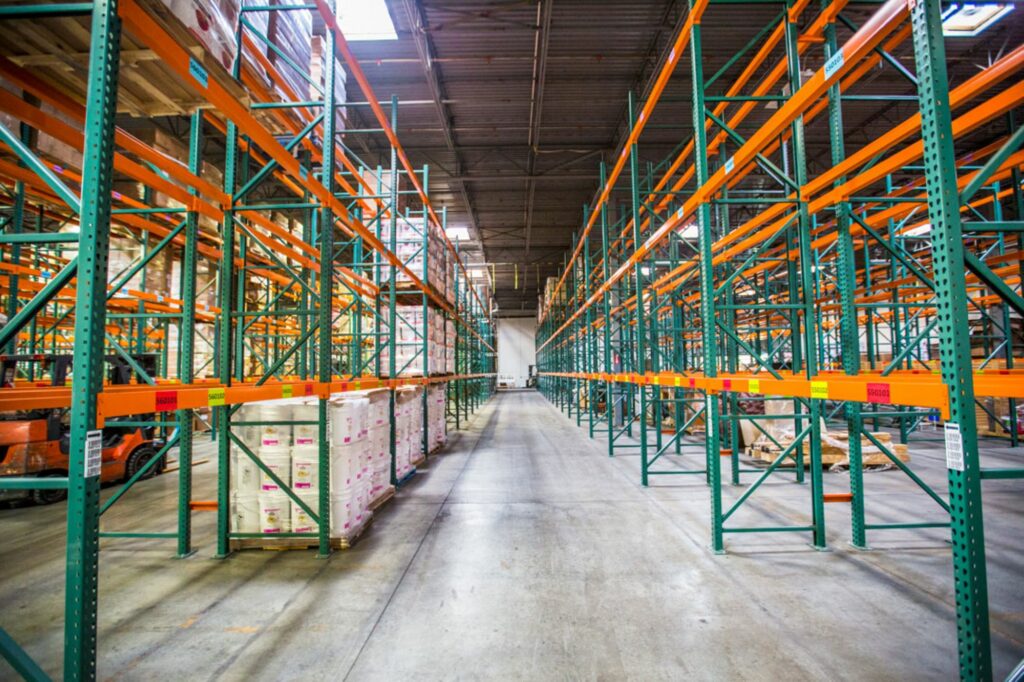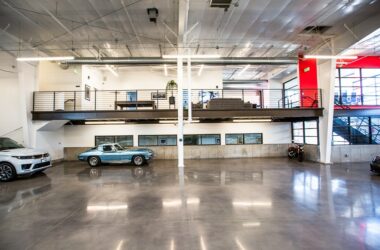Turning a business idea into reality can be a stressful and overwhelming process. You’ll need to develop a strong business plan, collect funds, and trademark a creative name. If you’re handling a substantial amount of inventory, you’ll also need to figure out where to store your merchandise.
While larger corporations often purchase their warehouse spaces, newer business owners usually opt for more flexible options, such as renting or leasing warehouse space from a third-party provider.
When selecting a warehouse that meets all your business needs, you’ll have to consider a facility’s location, accessibility, security, and cost-effectiveness as well as your own space requirements. Here’s everything you need to know about renting a warehouse.
Tip: Need a self storage unit, rather than a warehouse? Read all about self storage here.

Consideration #1: Square Footage
First, it’s important to determine how much warehouse space you actually need for your product. Here’s a breakdown of some of the most popular warehouse sizes:
Small Warehouses: A small warehouse typically ranges from around 1,000 to 5,000 square feet. These compact spaces are suitable for startups, small businesses, or those with limited inventory.
Medium-Sized Warehouses: Medium-sized warehouses range between 5,000 to 20,000 square feet. These warehouses accommodate growing businesses with moderate inventory levels. They provide more space for storage and operations than small warehouses, allowing for increased flexibility in inventory management.
Large Warehouses: Large warehouses typically exceed 20,000 square feet and can extend to several hundred thousand square feet. These spaces cater to larger enterprises, distributors, or businesses with substantial inventory volumes.
Several other factors will determine how much warehouse space you need. Consider the following questions when deciding on the optimal warehouse size:
- Can you stack your product to take advantage of vertical space?
- Do you have access to forklifts? If not, how high can you feasibly stack products?
- Do you foresee seasonal fluctuations in inventory?
- Are you just storing products or also assembling/packing items?
If you anticipate your business growing substantially, opt for a storage facility with room for expansion. That way, you’ll be able to purchase more space from your landlord on short notice.
Consideration #2: Climate
The type of warehouse you select will depend on the items being stored. Textiles and fabrics, for instance, likely need climate-controlled storage to prevent damage from humidity and mold. These storage facilities are typically kept between 55 and 75 degrees and often have an HVAT unit and a dehumidifier to keep products in pristine condition.
Other items that may need climate-controlled storage include electronic devices, cosmetics, perishable goods, spices, or paper-based products, like stationery or art.
If you’re handling more durable products, like sporting goods, kitchen items, or gardening equipment, a non-climatized unit is probably fine.
Regardless, it’s always good to check with your potential landlord ahead of time so you know what kind of warehouse space to expect.
Consideration #3: Lease Length
Like the square footage, trying to forecast your lease length can save you money. If you know you’re only renting warehouse space for a couple of months, don’t sign on for a year. See the need for a long-term commitment? Try and talk your price down because you’re guaranteeing a long-term relationship with the property manager.
Most warehouses will try to negotiate a longer term, often 5-10 years. If you don’t see yourself committing to that length of time, it may be best to find a storage unit that allows for shorter terms or even month-to-month renting.
Consideration #4: Location
Don’t overlook the importance of a convenient warehouse location. If you think you’ll need to access your inventory on a regular basis, make sure you select a warehouse close to highways and other major streets to facilitate swift transportation.
This will also help you reduce transportation costs and ensure that your customers receive their products quickly.
Consideration #5: Accessibility
Another key consideration is the accessibility of your warehouse storage space. A warehouse should have a loading dock that can accommodate large freight. There should also be plenty of space around the dock for maneuvering trucks and other equipment.
The way in which your unit is organized will also dictate its accessibility. Make sure that you leave plenty of room for delivery vehicles and forklifts if you anticipate needing them. Here are some other accessibility considerations:
- 24-Hour Access: Determine if your business operations require round-the-clock access to the warehouse. Some facilities offer 24-hour storage so you can access your inventory at any time of day.
- Pathways and Aisles: Maintain clear and wide pathways and aisles between storage units for easy navigation, movement, and accessibility of inventory.
- Adequate Clearance: Ensure there’s sufficient vertical clearance within the warehouse for stacking goods. This will help you maximize your space.
Pay attention to a warehouse facility’s safety features as well. Are the spaces well-lit? Is there security to prevent a break-in? Is there video monitoring? A commitment to safety protects not only your products and your employees but also your business’ reputation.
How Much Does it Cost to Rent a Warehouse?
It’s not cheap to rent warehouse space. To calculate the monthly rent, you first need to multiply the average base rental rate by the total square footage that you need. After that, you’ll need to add your estimated operating expenses and maintenance costs.
Operating costs could include utilities, maintenance fees, property taxes, insurance, and any other additional costs specified in the lease agreement.
On average, facilities charge $0.85 per square foot per month as a base rate. The average estimated operating expense is $0.25 per square foot per month. With these averages, a 1,000-square-foot space would cost $1,100 a month.
Remember that the price of a unit varies greatly depending on the location of the facility. Renting a warehouse in Miami, for instance, will likely cost twice as much as renting one in Savannah, Georgia.
If these warehouse costs scare you, consider looking into peer-to-peer storage facilities, like Neighbor, which offer space for a more competitive price.
Questions To Ask The Warehouse Broker?
Not all warehouses are the same. Facilities have different protocols when it comes to handling utilities, paying repairs, and installing safety features. Here are a couple of questions you should ask your warehouse broker before signing a lease.
- Who pays for electricity?
- Who pays for maintenance?
- Who pays for physical and system repairs?
- Who pays for broken parts built in the warehouse?
- Can the landlord pay for the tenant-made improvements?
- Do I need to install safety signs?
Also, be sure to tour a facility before committing to it. Facilities always put their best foot forward, so photos you find online might not always be accurate.
Other Considerations
It’s important to note that not all warehouse spaces come with shelving. Don’t be surprised if you tour a warehouse that is simply a large open space. In this case, you can either make your own arrangements or ask the landlord if there are shelving options available.
You might also want to evaluate the doors in your warehouse. If semi-trucks will be coming in and out of your warehouse, you need dock doors that are at least 10 feet tall. You may also need more than one door if you plan on needing several trucks.
Next Steps
If you’re ready to take things to the next step, you’ll need to submit an application to the facility. The application will include basic information about your business, such as your company’s legal name, address, and a brief overview of your business operations. Once the application is approved, you’ll be sent a lease which you’ll sign before moving your inventory into its new home.
Warehouse Storage on Neighbor
Neighbor, a leading peer-to-peer storage marketplace, is significantly more affordable than most warehouse storage options on the market.

Instead of locking yourself into a 5-10 year-long lease, you rent month to month with Neighbor. If your business suddenly grows and you need a new space, you don’t have to worry about canceling a lease. For warehouse storage options in your area, check out Neighbor.







